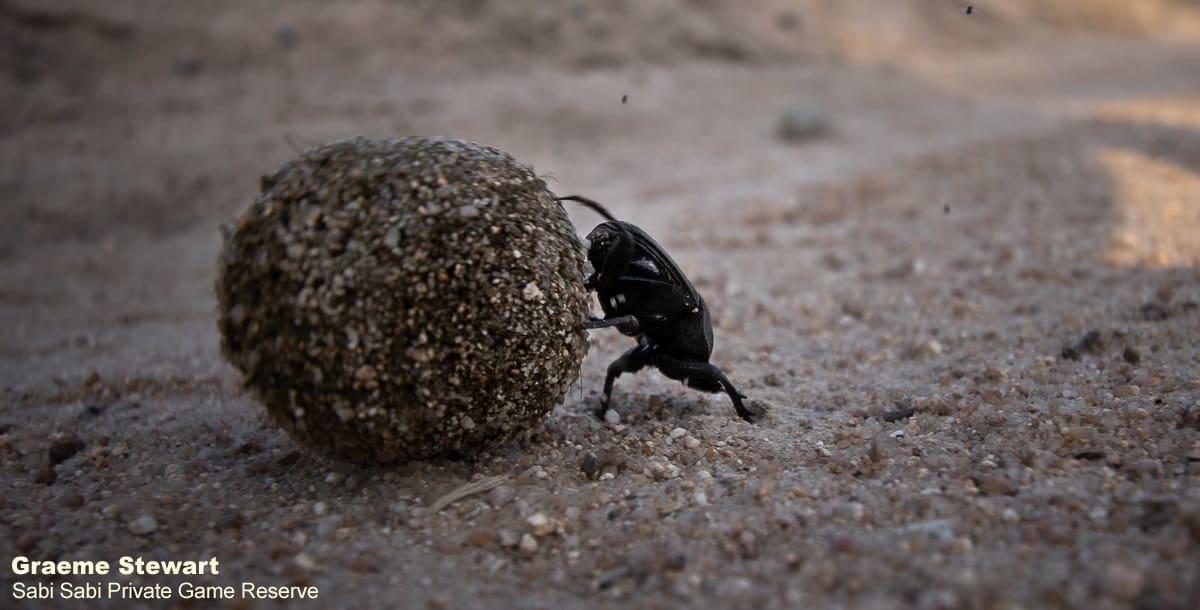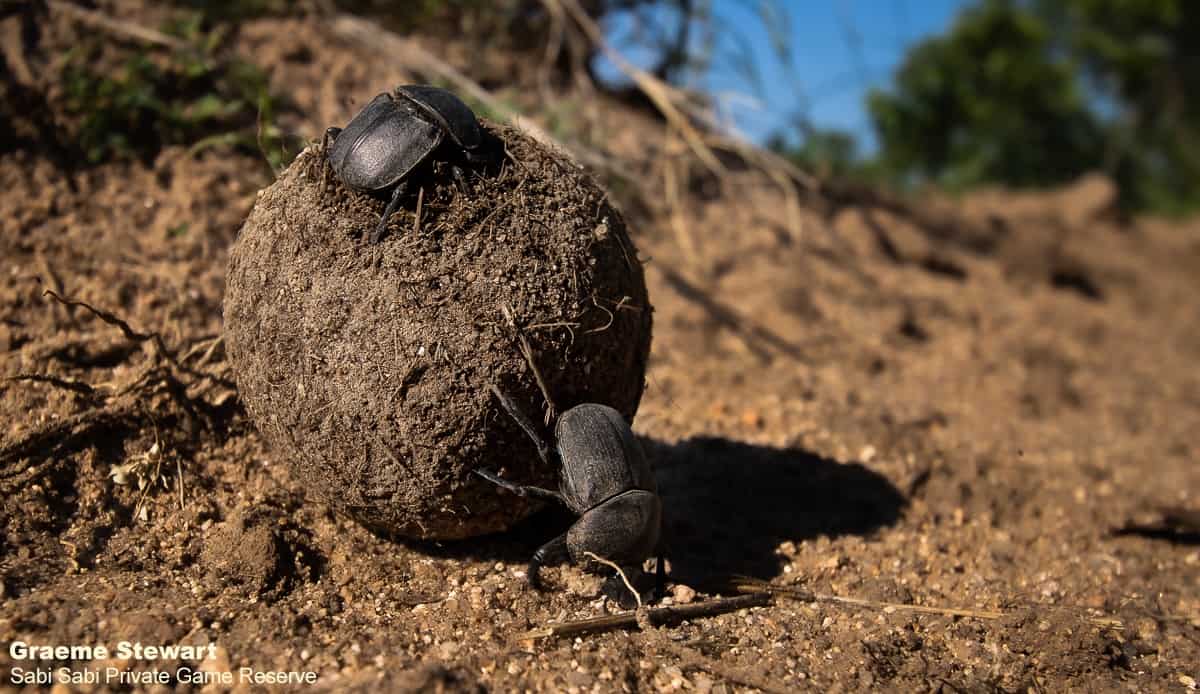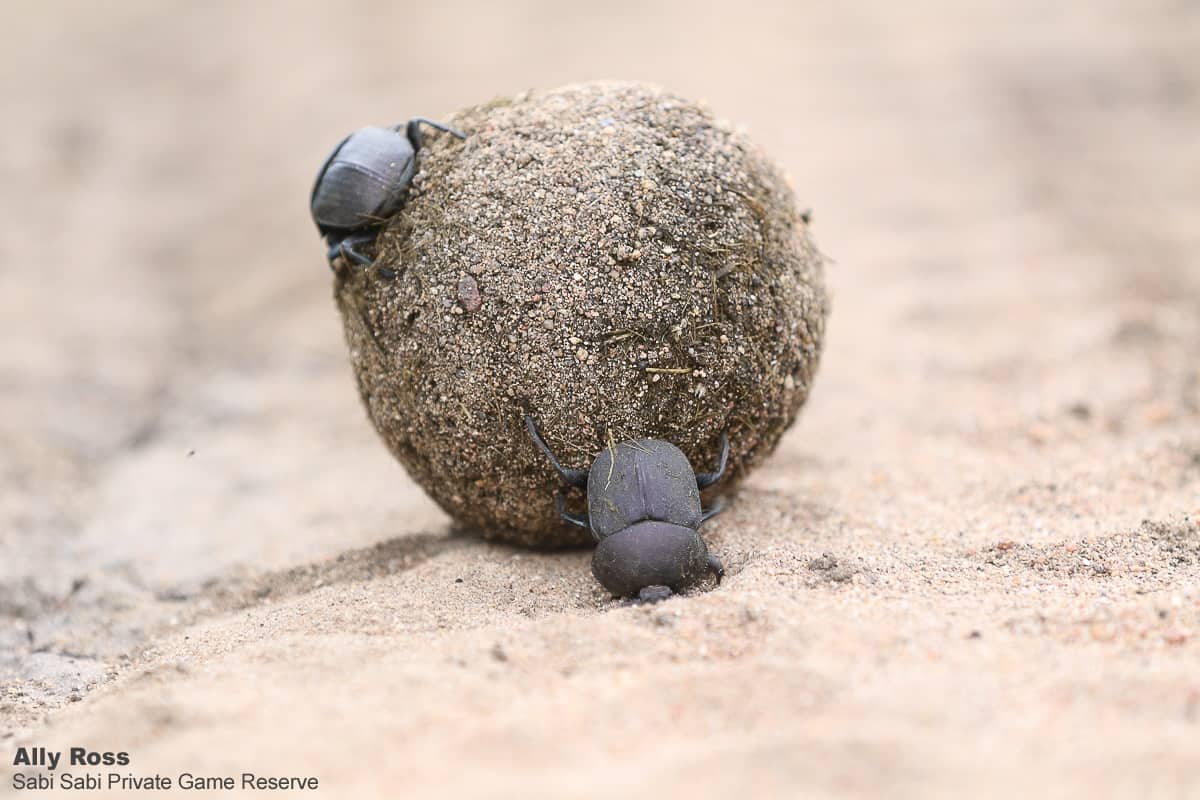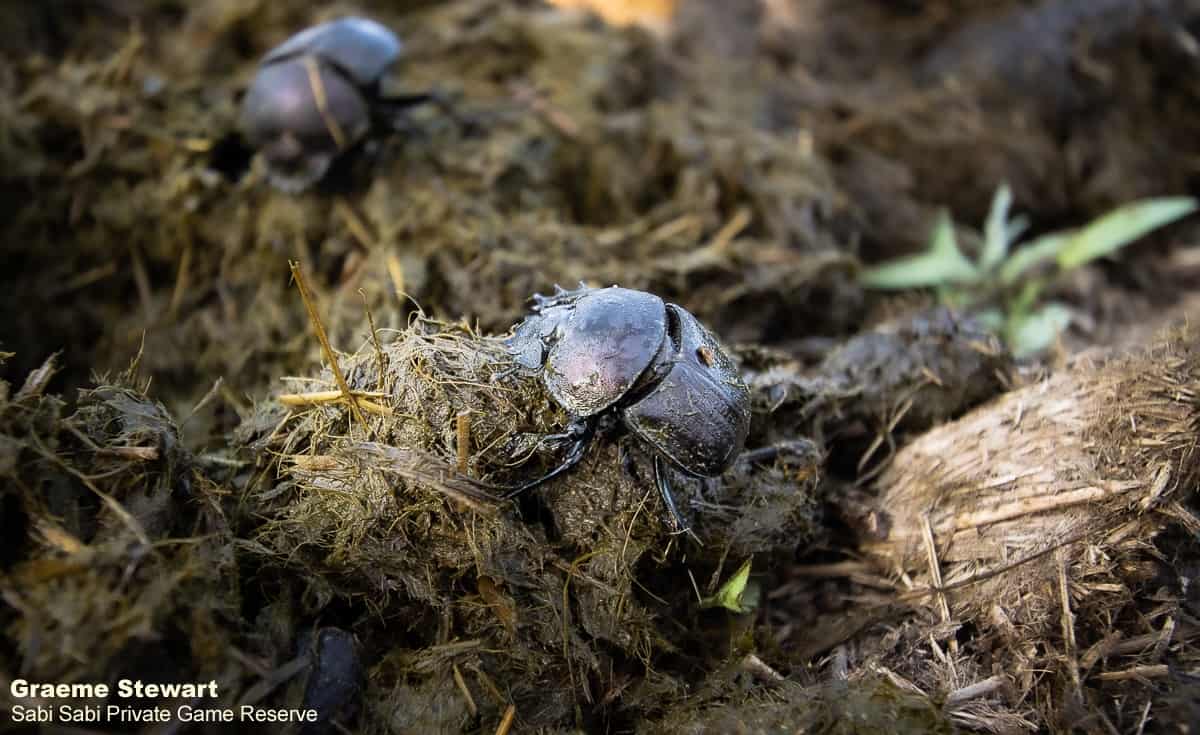A day in the life of a dung beetle
on Dec 24, 2020Have you ever been on a safari and witnessed something so bizarre but rather incredible, a ball of dung being rolled down the road, often seeming out of control and thought to yourself, what on earth is happening here?!
Well, let me explain by starting at the very beginning...
There are 4 main types of dung beetles, and each doing these completely different.

First, there are the Telecoprid dung beetles, these are the beetles that you see rolling down the road with a dung ball usually three times their size, pushing them with their hind legs.
Second, is the Paracoprid, unlike the more common species of dung beetle who will create a dung ball and roll it away from the dung pile, these species will instead burry the ball of dung underneath the actual pile of dung, whether it’s a rhino midden or a pile of dung dropped by an elephant.
Next is the Endocoprid, basically the adults will breed inside the dung pile instead of rolling a ball.
Lastly you get the Kleptocoprid, these species do things very different from the other three. They will wait for the opportune moment for an unsuspecting male dung beetle and steal his dung ball and roll it away while attracting a female.
Now that we have an idea as to what’s going on in the pile of dung, we can focus on what’s happening with the big ball of dung being pushed up the road.

A male dung beetle will create a ball of dung by gathering as much as he can from a pile of dung and leave the area as quick as he can to try and escape any possible thieves. As he rolls away, he will attract a female as they are attracted to the best-looking ball of dung. Once the female has found a dung ball she will attach onto the ball and be rolled around away from the pile of dung. The interesting part of this is how the male knows where he is going as he will be pushing the ball backwards with his hind legs using the sun as the main sense of navigation known as celestial navigation.

Once the male has found a perfect spot for his dung ball to be buried, he will begin to excavate a hole large enough for his dung ball to fit safely and the female will then lay her egg inside the ball. After just one week the egg will begin to hatch and feed on the dung.
After around two to three weeks the larva will turn into a pupa and eventually the pupa will emerge from the dung ball as an adult beetle and so the cycle continues.

A simple but remarkable life cycle of the dung beetle. As small as they seem, they have a really challenging life.






